6 Different Types of Welding Helmets Explained (With Pictures)
Last Updated on
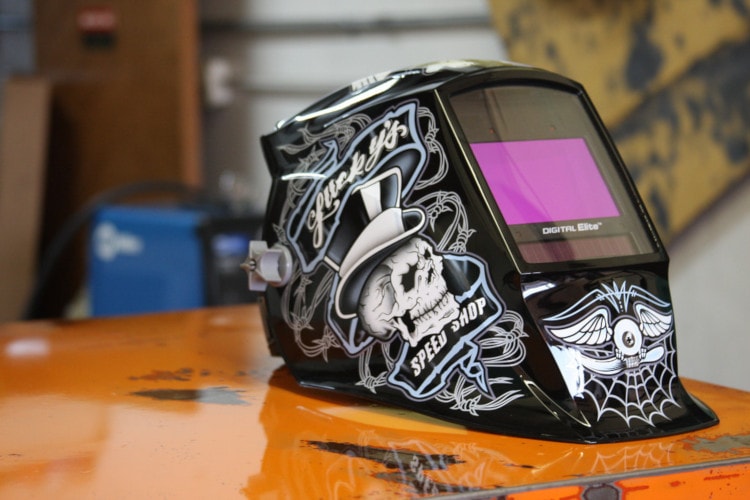
In the world of welding, your welder’s helmet is your shadow and probably your most important tool. The helmet becomes an extension of the welder, as it is on at all times during work. Due to the fact that the helmet never comes off while you’re working, it is of the utmost importance that you are comfortable with your helmet. Picking a helmet might seem like a no-brainer, but you will be surprised by how much the helmet alone can affect your welding process.
The 6 Different Types of Welding Helmets:
1. Passive welding helmets
This is the most basic type of welding helmet. The passive welding helmet is not a modernized helmet with fancy features, but this does not take away from its effectiveness. It is well-built with tough material. It protects its wearer from flying objects, ultraviolet rays, and the extreme heat emitted from welding.
One of the most favorable advantages of the passive welding helmet is the fact that it is affordable. This helmet would be ideal for any welder who is either on a budget or prefers simple equipment.
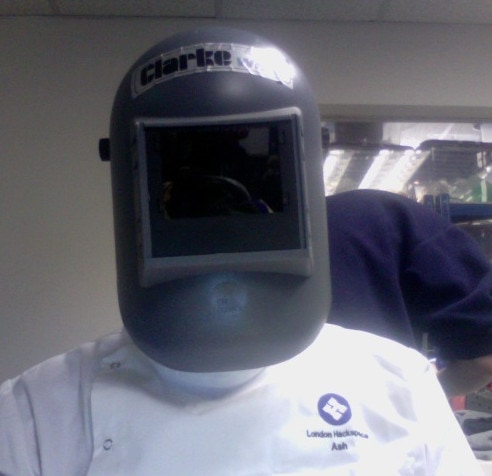
2. Auto-darkening welding helmets
The passive welding helmet might be effective in fulfilling its purpose, but because the lens has to be adjusted consistently, the need for a helmet with an automated lens is evident. This is the main feature of the auto-darkening welding helmet.
During the welding process, the automated helmet will detect the light that is emitted and will adjust the lens accordingly. This feature was implemented in helmets because welders believed that the constant manual adjusting of the lens distracted them and significantly reduced their productivity.
Auto-darkening may prove to be efficacious, but its main shortcoming is the fact that it is usually not very affordable.
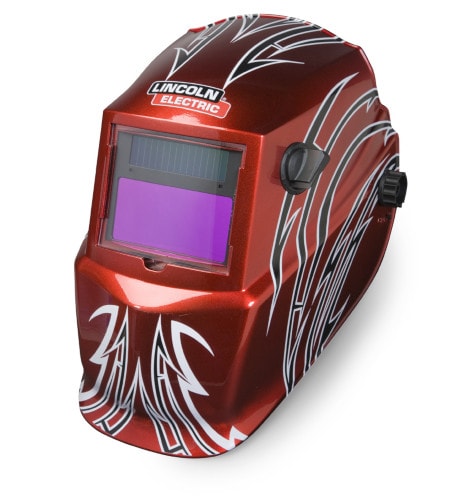
3. The solar-powered lens helmet
Some auto-darkening helmets use a fixed battery that can’t be replaced, as it is meant to be recharged by solar energy. The battery will power start the helmet; however, the solar energy will keep it going.
Using solar-powered helmets may prove to be economical, because the battery pack doesn’t do much work. Additionally, this type of helmet automatically switches the lens off when not in use. This further increases the economical nature of the solar-powered helmet.
One of the reasons many welders are reluctant to opt for a solar-powered helmet is the fact that it is not ready to use. One would always have to remember to place it in the sun for recharge the day before a project. Forgetting to do so would result in precious time wasted on a project, which could be very costly.
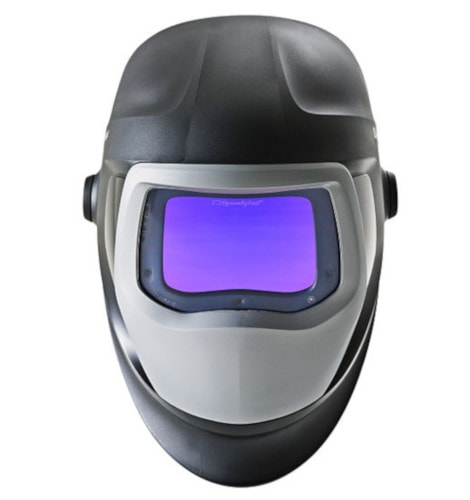
4. The battery-powered helmet
The battery-powered helmet uses a rechargeable or replaceable battery that is commonly made of Lithium.
Welders are often very busy completing complex projects. If they complain about having to adjust their lenses manually, imagine how much of a hassle using a solar-powered helmet must be. It is more economical than the battery-powered helmet, but many welders would rather spend a little more on replacing batteries, rather than find themselves in a predicament where their batteries aren’t ready to use just before a project.
With regards to both the solar and battery-powered helmets, it is a matter of personal preference, because both types have their advantages and shortcomings.
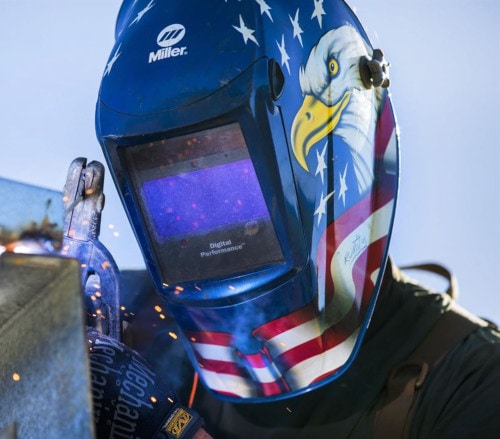
5. The fixed-shade lens welding helmet
Fixed-shade helmets typically come with a conventional shade level of 10. These helmets do not adjust to various arc brightness. The fixed-shade lens will be ideal if you intend to work on only one type of project that uses only one type of material. This way, there will be no need to adjust the lens accordingly. This helmet will also be ideal for DIY savvies who are not experienced welders but like the option of fixing things themselves.
Most welders refer to this type of helmet as the “daddy” helmet, because dads will opt for wearing this helmet to fix their iron gates or their child’s bicycle frame.

6. The variable-shade lens welding helmet
Unlike the fixed-shade helmet, this helmet has a feature that enables the lens to adapt to all sorts of lights and brightness emitted by the arc during welding. This helmet is preferred by welders who tend to work on various kinds of projects involving different materials.
Variable and fixed-shade helmets are equally protective. However, the variable-shade helmet adjusts the darkness that the lens provides, thereby increasing the welder’s visibility field tenfold. This may seem like a useless feature, but imagine that you’re welding and the light emitted is too bright. You can’t see properly, and as a result, you make a mistake that results in a welding defect. Most welders will tell you that a defect is a welder’s worst nightmare, because in most instances, the whole weld has to be redone.

Choosing your helmet
There are countless opinions on which helmet type is best. However, your choice of helmet should be based on preference, the tasks that you need to perform, and safety standards.
There are safety standards for welding helmets. Some of these safety aspects include complete protection from flying objects, ultraviolet rays, and infrared. The weight of the helmet should not hinder your movements or cause neck pain. The helmet should be sturdy and strong enough to withstand external forces, and it should be able to protect you from the heat emitted.
In order to choose the ideal helmet, take the safety standards, your budget, and your needs and preferences into consideration.
Note: We also have a list of all the safety gear you should wear when welding.
Featured image credit: Weld House LLC, Flickr
